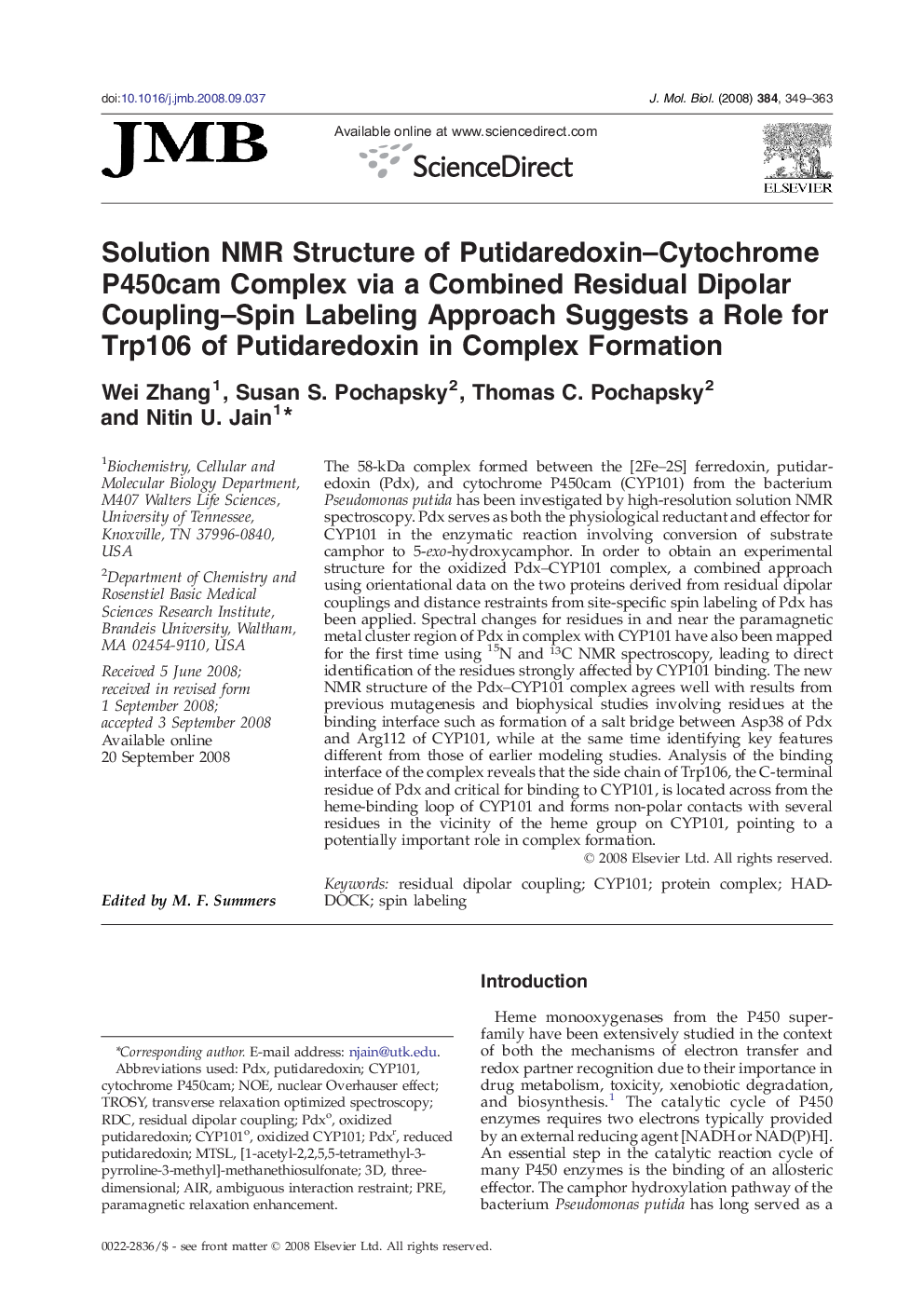| کد مقاله | کد نشریه | سال انتشار | مقاله انگلیسی | نسخه تمام متن |
|---|---|---|---|---|
| 2186976 | 1096090 | 2008 | 15 صفحه PDF | دانلود رایگان |

The 58-kDa complex formed between the [2Fe–2S] ferredoxin, putidaredoxin (Pdx), and cytochrome P450cam (CYP101) from the bacterium Pseudomonas putida has been investigated by high-resolution solution NMR spectroscopy. Pdx serves as both the physiological reductant and effector for CYP101 in the enzymatic reaction involving conversion of substrate camphor to 5-exo-hydroxycamphor. In order to obtain an experimental structure for the oxidized Pdx–CYP101 complex, a combined approach using orientational data on the two proteins derived from residual dipolar couplings and distance restraints from site-specific spin labeling of Pdx has been applied. Spectral changes for residues in and near the paramagnetic metal cluster region of Pdx in complex with CYP101 have also been mapped for the first time using 15N and 13C NMR spectroscopy, leading to direct identification of the residues strongly affected by CYP101 binding. The new NMR structure of the Pdx–CYP101 complex agrees well with results from previous mutagenesis and biophysical studies involving residues at the binding interface such as formation of a salt bridge between Asp38 of Pdx and Arg112 of CYP101, while at the same time identifying key features different from those of earlier modeling studies. Analysis of the binding interface of the complex reveals that the side chain of Trp106, the C-terminal residue of Pdx and critical for binding to CYP101, is located across from the heme-binding loop of CYP101 and forms non-polar contacts with several residues in the vicinity of the heme group on CYP101, pointing to a potentially important role in complex formation.
Journal: Journal of Molecular Biology - Volume 384, Issue 2, 12 December 2008, Pages 349–363